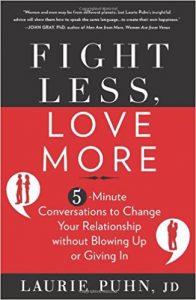Years ago I knew a man who was a model of dignity. Every year he hosted a Christmas party in his beautiful home, alongside his beautiful wife and family. He was poised, sophisticated, and thoroughly conversant with world issues. If I ever knew a man who was dignified, I thought, this was the guy.
I continued to think that until the police came to his house one day and arrested him for criminal activity in the business he ran. Away to prison he went, and away with him went my conception of what it meant to be dignified.
Human dignity is more fundamental than such attributes as poise or titles or wealth or intellect. It is a quality shared by every human being. An emaciated Somali child in a refugee camp shares this dignity just as much as a member of the British royal family.
From the moment of conception, all of us have an intrinsic dignity by virtue of being created “in the image of God;” by being endowed with a soul, which, among other things, gives us the ability to reason and make free choices in life; and by having a destiny, if we choose to seek it, of living eternally in the presence of God.
Human Dignity and Human Rights
Human dignity implies human rights, a respect accorded to all human beings, whether rich or poor, young or old. In other words, human rights are shared in equal measure by all people.
The most basic human right is the right to life. It is enshrined in the Ten Commandments with the injunction: “Thou shalt not kill.” It is the first right mentioned in America’s Declaration of Independence. It implies more than mere survival. It means a life free from servitude and a life that includes whatever spiritual and material means are necessary for living a life of dignity. If living in luxury is not a sign of human dignity, neither is living in destitution conducive to it.
A second basic human right is the preservation of family life. The family is the original and fundamental unit in society. Within the family, wrote Pope John Paul II, young people receive their “first formative ideas about truth and goodness, and (learn) what it means to love and to be loved, and thus what it actually means to be a person.” The family is such a vital cell of society and so important for personal growth that one of the most powerful arguments against slavery in the 19th Century was the breakup of slave families.
A third fundamental right is the right to own property. Private property gives individuals and families some form of protection from the world outside, a sphere of self-determination that is necessary to be fully human. The old saying, “A man’s home is his castle,” suggests not only the pride he takes in ownership but the legal fortification needed to preserve his family’s protection and independence. Property is also what workers earn from the fruits of their labor. To take away their property is to steal from them what they rightfully earned. A telling argument against servitude is that slaves have nothing they can call their own, that they receive no real compensation for the work they do.
A fourth basic human right is the right of association. People naturally associate with one another, whether in families, churches, political parties, social clubs or professional organizations. In such groups, people find others who share their interests and ideals, who help protect their freedoms and nurture their talents. For example, Catholic social teaching has long supported the right of workers to form unions. Such groups give individuals the ability to protect their own interests and to stand up to wealth and power.
Personal Responsibility
Human rights are an essential part of human dignity. But human dignity also implies personal responsibility.
A free will is one of the key attributes of human dignity. In modern terms, freedom means the ability to do as you please. Catholic teaching has a more profound understanding of freedom. It’s based on the understanding that many of the things we do have a moral component; that is, they tend to be good or evil.
A well-known psychiatrist, Viktor Frankl, spent three years at Auschwitz and other Nazi prisons. In writing the story of his imprisonment, he proposed a Statue of Responsibility to be erected on the West Coast. This statue, he suggested, would complement and balance the Statue of Liberty on the East Coast. He saw what happened when a group of men arrogated to themselves the freedom and the power to decide what is good and what is evil.
According to the Book of Genesis, write the authors of the Compendium of the Social Doctrine of the Catholic Church, “the power to decide good and evil does not belong to man but to God alone.”
As the creator of the world and the people in it, God knows what leads to true happiness and what leads to misery. That knowledge has its expression in God’s moral law. People find their true fulfillment when they accept that law. And “by deviating from the moral law,” says the Church’s Catechism, “man violates his own freedom, becomes imprisoned within himself, disrupts neighborly fellowship and rebels against divine truth.”
Human dignity is the birthright of every man and woman. It is inalienable, meaning it cannot be taken away by any person or institution. But it is also a foundation that can be built upon.
Learn more about Catholic Social Teaching.
About the author
Tim Lanigan is a retired speechwriter who worked for corporate chief executives, a Secretary of the Treasury, and members of both houses of Congress.

 Do you and your mate get into the same arguments, time and gain? Do you encounter family members who have the uncanny ability to push your buttons and get in your face, even though you set out to steer clear of strife? As a lawyer and couples mediator I have observed the same dumb arguments ruining relationships. In my book
Do you and your mate get into the same arguments, time and gain? Do you encounter family members who have the uncanny ability to push your buttons and get in your face, even though you set out to steer clear of strife? As a lawyer and couples mediator I have observed the same dumb arguments ruining relationships. In my book 



